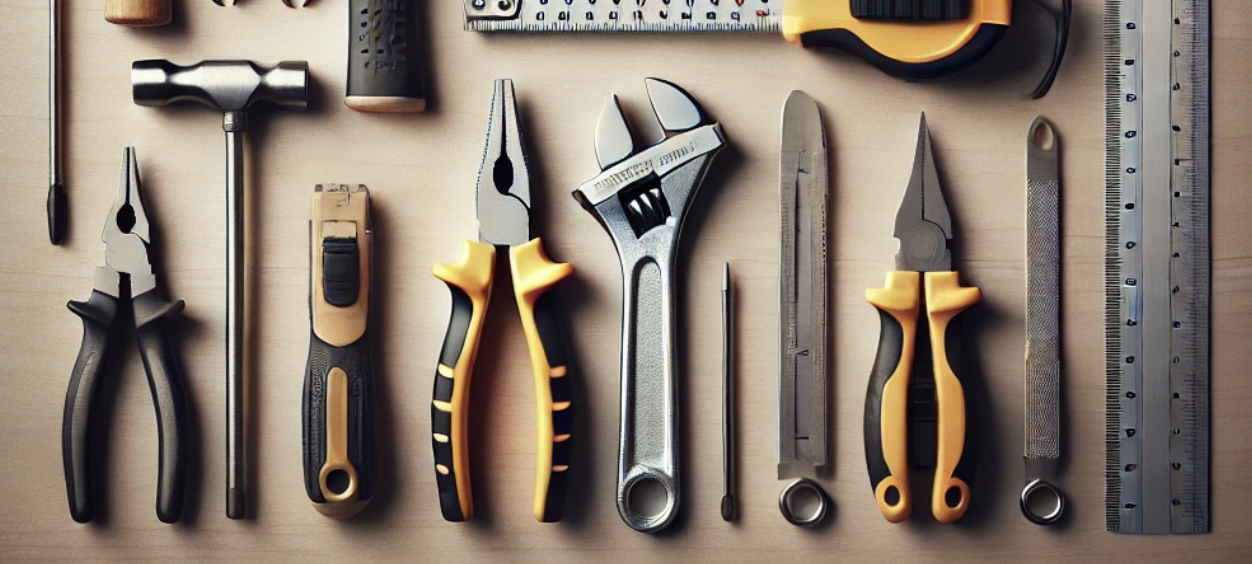
ERG
Jumpstart Guide to Building a Women’s Employee Resource Group

Toki Toguri
Co-founder and Customer Success Director for Diverst
May 4, 2023
Women’s employee resource groups, or women’s ERGs, are not a new concept. In fact, over 90% of Fortune 500 companies have ERGs, while 100% of the DiversityInc Top 50 companies have them. In every case we’ve seen, women ERGs exist anywhere you’ll find employee resource groups offered. That doesn’t mean every company has one, however. Once a company reaches a certain size, ERGs become necessary, especially those for different affinity groups like women.
And that is exactly why we’re having this conversation. Starting a women’s ERG might seem easy, but there are many different considerations you’ll need to follow before you build one. Navigating topics such as program structure, internal support (executive buy-in), participant support (employee buy-in), and metric-based evidence isn’t always intuitive.
This post will help you get your women’s employee resource group up and running. Since this isn’t an overnight process, this is an extensive how-to guide. we recommend bookmarking this page so you can come back to it later.
What Is an ERG for Women?
A women’s ERG (or women’s BRG) is designed to offer support, mentorship, and advocacy to women in the workplace. These programs have been gaining popularity in recent years as companies recognize the need to create a more inclusive and equitable environment for their female employees.
Believe it or not, this question is far more complicated than it might seem on the surface. It can also be fairly political in nature, so you’ll need to navigate this very carefully as you build your group internally.
Traditional vs. modern definition of a women’s ERG
Traditionally, a women’s ERG would be available to anyone who is a biological female. From a modern perspective, however, sex and gender are now considered different. A traditional ERG for women would be restricted to only women whose sex, or biological sex, is female. However, a modern approach to a women’s ERG is one where anyone identifying with the female gender would be allowed to join.

We started with this topic because it’s too important to ignore even at the outset of your program planning phase. You will need to decide right now how you plan to tackle this issue. This is also a topic where neutrality is impossible. You will have to make a decision, and it’ll need to be made fairly quickly. Regardless of where you land, there will likely be consequences. The question remains for you: which side of this debate you are comfortable with being on, and whether you are properly prepared for those consequences?
1. Create a List Showing the Benefits of a Women’s ERG
Don’t spend too much time dwelling on the socio-political minefield you’re going to encounter within this topic. After you make a decision on it, move on to strategizing on the benefits of this program.
Understanding and writing out the benefits of launching a women’s ERG is important for two reasons:
- You’ll need this information to build buy-in from executives who may need to provide funding and support.
- You’ll need this information to build buy-in and get participation from women in your organization.
Creating this type of program requires a careful balance of strategy, dedication, and a willingness to take risks and step outside of your comfort zone. Whether you’re a seasoned HR professional looking to take your company’s diversity and inclusion efforts to the next level or a woman looking to get involved and make a difference in your organization, being able to give voice to the benefits will help you convince stakeholders and participants to come on board.
10 data-backed benefits of a women’s ERG
Here’s a list of benefits you can point to that might help you build that buy-in and establish credibility for the program. This is just to get you started. We recommend you find others that might build off of your internal HR data tied to female employees (such as recruitment, retention/turnover, and promotion data):
- 90% of Fortune 500 companies have ERGs
- 100% of Diversity Top 50 companies have ERGs
- The majority of college graduates are now women, meaning more women will be filling high-needs and high-skill positions in the workforce
- Women are more likely to discuss personal issues with coworkers (and often need a safe space to do so).
- Women are still significantly underrepresented in leadership roles and need support networks focused on their distinct needs
- Women leaders are more likely to quit than their male counterparts.
- Fortune 500 companies with women leaders were more profitable, on average, making support and retention strategies for women more important than ever
- Employee engagement programs, especially those with mentoring elements, can reduce turnover by as much as 50%
- Loneliness is at epidemic levels, with 53% of women reporting loneliness in the workplace
- Women who support women are more successful, but that’s often hard to accomplish with networking
Implementing Employee Resource Groups (ERGs) specifically focused on women’s issues can help support these and many other issues. An ERG platform can create the structure necessary for women to connect, support each other, and advocate for change within their organizations.
They can also help address a wide range of issues, from mentorship and career development to maternity leave policies and gender bias in the workplace. Why are these groups so important? For one, they provide a space for women to share their experiences and ideas and to feel heard and valued.
The whole company benefits when women have ERG for support
Beyond the personal benefits, a women’s business resource group can also positively impact the company as a whole. By promoting diversity and inclusion, they can help attract and retain top talent, improve employee morale and engagement, and ultimately enhance the company’s bottom line.
Of course, creating a successful women’s ERG requires more than just checking a box.

It requires commitment from company leadership and a willingness to make meaningful changes based on the feedback and ideas of the group. It also requires ongoing support, both in terms of resources and guidance.
But the benefits can be invaluable for both the women involved and the company as a whole. By empowering women and promoting diversity in the workplace, women’s ERGs are helping to create a more equitable and inclusive future for us all.
2. Plan the Program Structure
Creating a program of any kind for the first time can feel like working with a blank slate. Wireframing your structure can at least get you started in the planning process. It doesn’t have to be perfect and it doesn’t have to be detailed (unless your executives need that). It just needs to answer the basic questions that are essential for any employee engagement program:
- Who will be involved?
- What will the program be about?
- When will the program be launched (timeframe)?
- Where will the program live (ERG platform or ERG software for managing the group)?
- How will the program be implemented and run?
- Why do we need it?
Pulling out the 5 Ws and an H can seem old school, but you’d be surprised by how answering these simple questions can build buy-in from executive leaders. Providing answers to these questions will also help you and anyone on your program development team come to some agreement on program structure and purpose.
Let’s get into the nitty-gritty, though. Here’s a detailed guide to help you plan out the structure for a women’s BRG program:
Identify the purpose and objectives (the “why” question)
First, identify the purpose and objectives of the women’s ERG program. The purpose could be to:
- Promote gender equality
- Support women in career development
- Provide networking opportunities
- Promote work-life balance.
Objectives can be specific goals to achieve, such as increasing the representation of women in leadership positions or improving retention rates of female employees.
Establish the group’s membership and leadership
We’ve written about ERG leadership structures previously. We recommend you check that out as a complementary resource to this one, as leadership structure can be a complex topic all by itself.
For the women’s ERG leadership structure, determine who will be eligible to participate in the women’s ERG. Usually, these groups are open to all employees who identify as women, regardless of their job title, department, or tenure. Then, select a leadership team for the group, including (but not limited to):
- Chairperson
- Vice-chair
- Secretary
- Treasurer
Make sure the leadership team reflects your company’s diversity or that it aligns with your company’s existing DEI goals. We also recommend you include a mix of experience levels and job roles. Heavily favoring one group will alienate many potential participants once you launch.
Develop a mission statement
Create a clear and concise mission statement that outlines the purpose and objectives of the women’s ERG program. This statement should be shared with all employees to create awareness and understanding of the group’s goals.
Need a quick guide on mission statements for ERGs? Ally Energy offers up a fairly excellent resource that you can check out right here.
Establish guidelines and procedures
Guidelines and procedures are necessary for any ERG, whether it be an ERG for women or for other affinity groups. Creating this type of structure will ensure the program’s effectiveness and sustainability. It’ll also send the right signal to key stakeholders that you’re thinking deeply about organizational structure for the group.
Guidelines may include:
- The process for electing or selecting leaders
- Rules for group meetings
- Communication protocols
- Procedures for decision-making
Align these guidelines with broader policies and values that exist at your company. It’s ok to innovate the proverbial wheel here, but don’t try to go rogue, either. You’re trying to curry favor with both executive leaders who can put funding your way and with your female colleagues who may want to join the program. It’s important to find a nice middle ground that makes (most) people happy.
Develop programs and activities
Plan programs and activities that align with the purpose and objectives of the women’s ERG program. These can include training sessions, mentorship programs, networking events, and community service projects. Ensure that the programs and activities are accessible to all members, whether they work remotely or on-site.
Communicate regularly
Considering effective communication is a key factor for success in business (and life, really), you shouldn’t be shocked to find it listed here. Establish regular communication channels like email updates, newsletters, or social media platforms. Use or plan to ask for ERG software to manage your communications and organize events. The communication should keep members informed of upcoming events, initiatives, and progress toward achieving the group’s objectives.
Measure success and make adjustments
Regularly measure the success of the women’s ERG program and make adjustments as necessary. Collect feedback from members and leadership to assess the effectiveness of programs and activities. Use this feedback to adjust the structure, objectives, and activities of the women’s ERG program to ensure that it continues to meet the needs of its members and supports the organization’s overall goals.
Side note: Choosing the right ERG metrics to measure is too important to ignore. Check out our guide on ERG Metrics.
3. Align Your Program with Company Goals
What’s the quickest way to get a “no” from executive leaders holding the purse strings? You guessed it: not aligning with company goals and objectives. Your executive leaders aren’t (usually aren’t) a cadre of evil individuals hoping to keep you from achieving your dreams of launching programs. They’re looking at and constantly thinking about the company’s financial data because it’s what their job entails. If they can’t see how it adds value to the bottom line, you will face an uphill battle.
The solution is to strategically align your women’s ERG program with highly visible company goals and objectives. Doing so will help your executive leaders understand why your ERG program is necessary.
Let that sit rent-free in your head while you align yourself to the following details on how to make this work.
Understand the company’s goals and objectives
First, make an effort to understand your company’s goals and objectives. By that, we mean don’t just write down a list of the goals and objectives that your company has stated, but really dig into the reasoning behind why they exist. Review the company’s mission statement, vision, and strategic plan to understand its values and objectives.

Here are some additional questions an HR leader can ask to better understand the company’s goals and objectives and their motivations:
- What challenges or opportunities is the company facing, and how do these inform its goals and objectives?
- What are the company’s values, and how do these drive its decision-making and goal-setting?
- What is the company’s culture like, and how does it influence the goals and objectives?
- How does the company’s leadership approach goal-setting and decision-making, and what role do employees (and especially female employees) play in these processes?
- What external factors, such as market trends or regulatory changes, impact the company’s goals and objectives?
- How does the company view its role in the broader community, and how does this influence its goals and objectives?
- What stakeholders, such as investors or customers, are influencing the company’s goals and objectives, and how are their needs being addressed?
- How has the company’s history and past performance influenced its current goals and objectives?
Asking deeper questions like this can help you can gain a more nuanced understanding of the motivations behind the company’s goals and objectives and better align your women’s ERG program with the company’s overall strategy.
Identify how the women’s ERG supports the company’s goals
Once you understand the company’s goals and objectives, identify how the women’s ERG program supports them. For example, if the company’s goal is to increase diversity and inclusion (DEI), the women’s ERG program can support this by promoting gender equality and supporting the development and advancement of women in the workplace.
Align the women’s ERG objectives with company goals
Tie the objectives of your ERG to those of your company where that fit makes the most sense. For example, if the company’s goal is to improve retention rates of female employees, the women’s ERG program’s objective can be to provide mentorship and networking opportunities to support women’s career development and job satisfaction. Because ERGs are capable of supporting both of these goals, a women’s ERG program could be an easier sell to executive leaders.
Develop programs and activities that support company goals
Create programs and activities that support the company’s goals and objectives. Many companies have a goal to increase the representation of women in leadership positions, for example. Your ERG for women could fill this need in a way that company leadership will appreciate, especially if you plan to develop leadership training and mentorship programs to support women’s career advancement.
Communicate the connection to company goals to your colleagues
Don’t forget to develop a marketing plan for the employees at your company, as well. Women at your organization will need to see the value in joining the program and how it ties to both their own personal goals and the company’s goals. You can communicate this through company-wide announcements, internal newsletters, or town hall meetings.
Create a measurement strategy that’s aligned with company goals
Your executive leaders will need to see that you’ve done the hard work of identifying metrics to measure that align with company goals and establishing a cadence and strategy around measurement. We’ve already talked about this in more detail above, but we’ll just reiterate it here. Everything comes down to provable success data, so position this part of the conversation as high and as detailed as possible.
We know; that was a ton of information! And we’re not even done yet. By aligning the women’s ERG program with the company’s goals, HR leaders can create a program that supports the organization’s success and promotes gender equality in the workplace.
4. Create a Pitch Deck for Executive Leaders
Ah, the pitch. This is probably one of the hardest parts of the process. A good pitch will seal the deal, while a bad one could sour executive leaders on the idea of a women’s ERG for a long time. Not to make you too nervous, but a good pitch is hard to understate here.
There are several steps you’ll want to follow to make sure your pitch is as powerful and impactful as you need it to be. Thankfully, we don’t have to reinvent the wheel on this one. Mentoring software company MentorcliQ has an extensive video overview that explains how to get executive leader buy-in for mentoring programs. Consequently, the same principles apply for ERGs.
Grab a notebook, sit back, and watch this 10-minute video that offers a detailed strategy guide from HR leaders who have been in your shoes before.
Ready to Get Started Building a Women’s ERG?
This action guide hopefully puts you in the right mindset to build out your first women’s employee resource group. Even getting approval won’t guarantee the success of your program, however. Don’t let your program fail: use ERG software to manage the program, connect employees, and, importantly, measure and deliver the success data your executive leaders will need to see. Contact us today to learn how Diverst’s ERG software can fully support a women’s ERG program.





